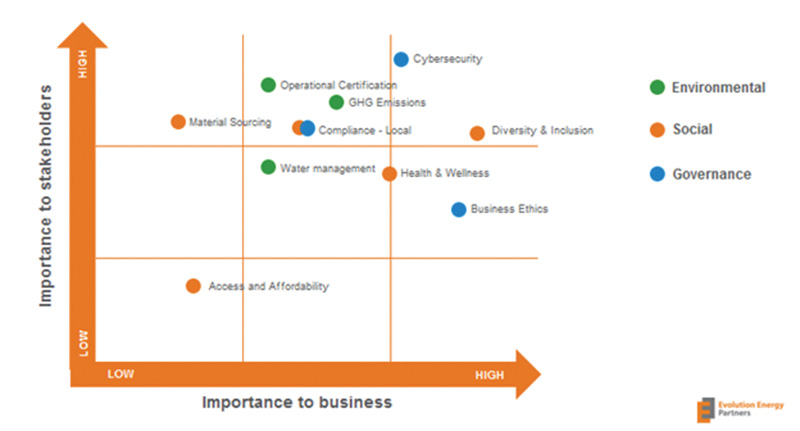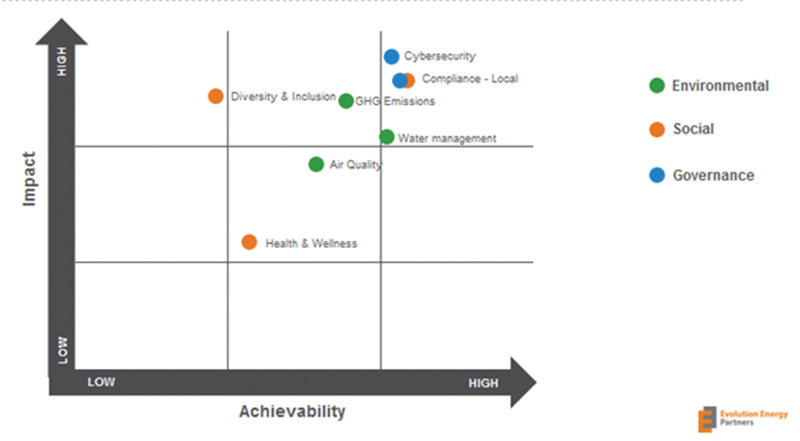Question of the Month: How do you build an action-based ESG program? - by Dailey Tipton

Environmental, Social, and Governance (ESG) has become a buzzword for many industries as we emerge from the pandemic and focus on companies’ impact on the community and the environment, but ESG is not a new term! When the first environmental regulations were passed in the 1970s, the realization emerged that we need to consider an organization’s impact on animals, people, soil, water, and air as a global society. It was not until recently that corporations began taking a firmer stance on the value of ESG; the pressure on corporate responsibility due to the pandemic, social unrest, and a focus on health and the environment have forced immediate action.
When companies are first introduced to the idea of ESG, it usually takes on “reporting” requirements and results in some level of goal setting by the organization. For example:
- Amazon: Make all Amazon shipments net-zero carbon, with 50% of all shipments net zero carbon by 2030
- 3M: Increase renewable energy to 25% of total electricity use
- CVS Health: By 2030, reduce the absolute scope 1 and 2 GHG emissions by 36% from a 2010 base year
Although reporting is a major aspect of ESG, there is a formalized process that a company must take. The ESG process includes multiple steps that are applied across various industries. The steps typically are as follows:
- Assessment (Materiality Assessment): An initial audit to define the organization’s current actions focused on ESG. The goal of the assessment is to define opportunities to support and address key impact actions internally and externally.
- Baseline: What is the organization doing today? Making sure early actions are captured and measured to define the current state of sustainable operations.
- ESG Goals: Once the “where we are” (baseline) is defined, the “where do we want to go” (goals) are created with buy-in from the organization’s internal and external stakeholders.
- ESG Strategic Roadmap: Transparent roadmap and framework for actions across the organization.
- Action Planning: Defining attainable actions quarterly/yearly and finding a measurable horizon to support the roadmap.
- ESG Reporting: Agreed upon reporting practice on progress of defined goals for internal and external stakeholders
When determining how companies define these results, a consultant will engage with the company and create a report. This report is based on company workshops, internal interviews, other time-consuming and costly activities that result in the company’s ESG report. Once completed, the report is pushed out into the organization to execute and uphold. In some cases, operations cannot meet the corporate goals as defined and fall short of the end goal, or the goals are easily met in the field by simple actions with limited impact. Let’s consider a more pragmatic approach that defines a much more actionable plan.
 Assessment
Assessment
A standard materiality assessment maps the stakeholder importance of the ‘E’, ‘S’, and ‘G’ against organizational impact. This is the basis for a corporate ESG report and includes critical information to allow an organization to define and prioritize ESG initiatives.
Before moving to the next step in the ESG process, an organization may replot this assessment by “impact” and “achievability.” For example, when looking at a social goal such as “integrating our workforce by 25% over five years,” the impact of the goal may be high, but the achievability with available resources is limited. This ESG goal may look great on paper but is not truly achievable for this organization. Without the definition of “achievability” as a driver in selecting ESG Materiality and Goals, there is a defined risk of over achievement or failure.
 The Impact of “E” on “S” and “G”
The Impact of “E” on “S” and “G”
Now that our goals are achievable, it is important to understand how our environmental goals correlate with our social and governance goals. The “Relevant Impact Graph” maps the impact of the ‘E’ goals on ‘S’ and ‘G”. Let’s consider a materiality goal of decreasing greenhouse gas (GHG) production by 25% by 2030. To achieve this, an organization must reduce energy use, decreasing its dependency on fossil fuels and other GHG causes. Now, what are the ‘S’ impacts of this ‘E’ action? Healthier work environments, corporate stewardship, incentives for employee recruiting, and more. What are ‘G’ impacts of the ‘E” action? An organization saves money, complies with energy reduction requirements, follows corporate performance standards, and supports a customer’s supply chain GHG reductions now or in the future.
When beginning your ESG journey, consider turning your focus toward business-based actions that drive ESG results. Instead of just defining individual E, S, and G goals, define goals that are realistic and impactful across the organization. The result is a strategy that benefits the financial success of an organization while maximizing the good. For more information about building your ESG program, contact the EEP team at [email protected] or 610-329-8288.
Dailey Tipton is the leader for revenue generation for Evolution Energy Partners (Evolution Sustainability Group), Exton, PA.
Meridian Capital Group arranges 10-year retail lease for Mess at 236 West 10th St.


Behind the post: Why reels, stories, and shorts work for CRE (and how to use them) - by Kimberly Zar Bloorian

AI comes to public relations, but be cautious, experts say - by Harry Zlokower

Strategic pause - by Shallini Mehra and Chirag Doshi









.jpg)
.gif)
.gif)